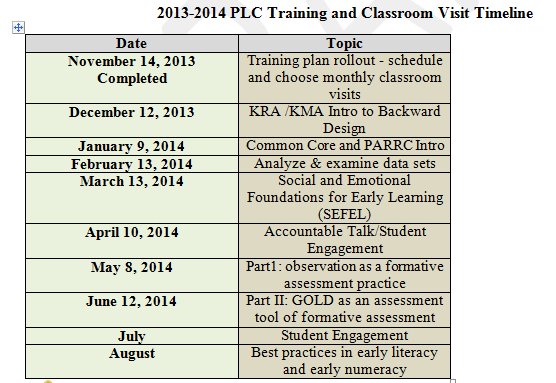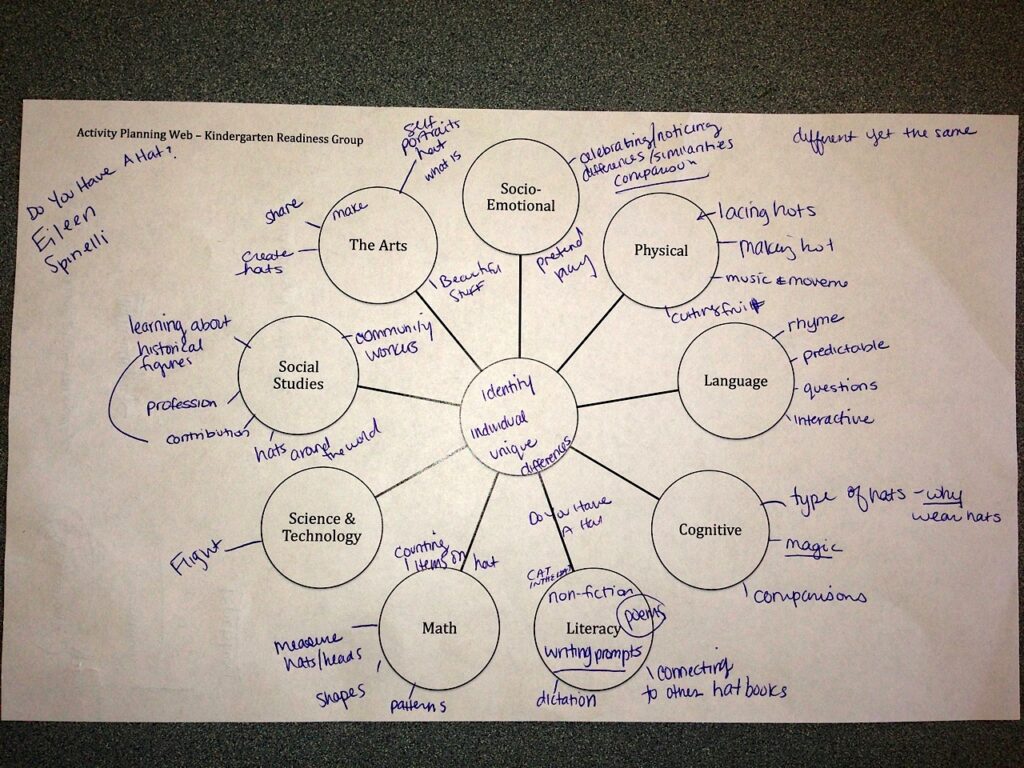Last week’s post described how both Somerville and Springfield have developed professional learning initiatives that bring together prekindergarten and kindergarten educators. The work of Somerville’s Kindergarten Readiness Group and Springfield’s Birth-Third PLC begins to suggest what the content of these workshops can be and what the participants get out of it. These examples also raise a number of helpful questions to consider when designing joint professional development experiences.
COMMON THEMES
“Demystifying What We Each Do For a Living.” In both Somerville and Springfield the PreK/Kindergarten collaborations began with discussions and cross-site visits in which the participants recognized many similarities in practice across settings. Public school teachers remarked that circle time and transitions felt familiar and expressed surprise in seeing the age range in the preschool programs; the community-based teachers found public kindergartens to be warmer and “more loving” than they are typically reputed to be and were impressed by the extent of literacy and writing activities they observed. Lisa Bakowski, the principal of the Boland Elementary School in Springfield, refers to this stage as “demystifying what we each do for a living.” In both communities, participants refer to their first meetings as leading to a cultural shift, an “opening up,” and laying a foundation of trust and relationships.
Sharing Teaching Practices. From the participants’ perspectives, the appeal of these meetings lies in the opportunities they create to share practices, to see different environments and classroom settings, and to learn more about the learning expectations and assessments found in each sector. At a recent Birth-Third conference in Springfield, a panel shared their experiences in the 2010-11 public/private PLC, and the teachers emphasized that they learned about many new ideas and lesson strategies that they brought back to their classrooms. Likewise, teachers at the Somerville Kindergarten Readiness Group readily share lesson ideas, ranging from using a storytelling bracelet in which each bead stands for a part of a story to a discussion of the use of turn and talks as children become developmentally ready to engage in this practice.
Motivation. The participants on the Springfield panel also emphasized the motivational impact of seeing a wider variety of classroom practice through the cross-site instructional learning walks. One veteran community-based preschool teacher shared the moving story of losing her entire classroom of materials, which had taken years to accumulate, when a large tornado hit Springfield last year. The teacher started over in a new classroom in a new building but felt demoralized professionally. She described the experience of seeing a prekindergarten teacher in an elementary school teach as a “refresher course” in all the strategies she had learned over the years but that in some cases had fallen by the wayside and needed to be brought back into the forefront of her practice. The visit provided her with new ideas and inspired her to begin re-incorporating a broader range of effective strategies into her teaching and helped her re-engage professionally. Conversely, teachers also found motivation in being visited by colleagues. As principal Bakowski explained, “We don’t know all the great things we are doing until we see it through others’ eyes.”

Learning Standards. In addition to sharing lesson ideas, the teachers in Somerville and Springfield were eager to explore their respective standards and assessments. For the meeting in Somerville referred to earlier, the meeting organizers had excerpted and matched sections from the EEC and ESE standards documents so that small groups could identify similarities and differences across the two sets of preschool standards and then compare the preschool standards to kindergarten standards. The participants found these activities highly useful, in particular as many community-based preschool teachers were unfamiliar with the new Common Core-aligned Massachusetts frameworks. Community-based preschool teachers in both cities expressed much interest in learning more about kindergarten expectations. As one Springfield preschool teacher said,
“I feel like it would make me a better teacher to really know what is expected of my students. What do you really need to know for kindergarten? I think they are ready. I think I am getting them ready. But I’m not 100% sure, and I want to be. Learning about kindergarten makes me look at myself as a teacher.”
Snowball Effects. Project directors in both Somerville and Springfield emphasize that the public/private early childhood collaborations in their communities are having snowball effects. Once a platform for collaboration is established, it is leading to additional collaboration. Now that principals and preschool directors have established relationships, when a principal realizes that a struggling prekindergarten child is also spending half of his or her day in a community-based preschool program, the principal is more likely to pick up the phone and call the preschool director. During Springfield’s first iteration of public-private PLC in 2010-11, community-based preschool directors expressed an interest in learning more about autism, which led to a workshop by an autism expert from the Springfield Public Schools that benefited both public and community-based preschool teachers. Likewise, the collaboration around the Birth-Third Alignment Partnership in Somerville has led to the incorporation of community-based prekindergarten teachers into the public schools’ annual Teacher Talks event, in which prekindergarten teachers go from table to table, meeting with kindergarten teachers to discuss the children moving into kindergarten. This additional intelligence about rising kindergarteners has had a large impact on how kindergarten class lists are formed.
LEARNING FROM EARLY EFFORTS
The joint professional learning projects in Somerville and Springfield raise for the field the kinds of structural design decisions that leaders of public/private early childhood education collaborations face. These design decisions stem from the overall purpose of the collaboration (e.g., standards alignment, assessment literacy, lesson design and teaching strategies, improving developmentally appropriate practice, and so on).
- What should the balance of teachers and leaders be?
- How often should the groups meet?
- What activities should they carry out? How can partnerships structure activities to make the most of valuable professional development time?
- Will a community-wide group best serve a community’s needs or is a pilot in a few neighborhoods preferable?
- Is it more important to expand the number of participants/schools/centers or to extend the work of a few groups more deeply into the analysis of assessment results and lesson study?
- And importantly, how do representatives from schools and centers share their experiences with their colleagues who do not attend?
Future posts will pursue how partnerships in Massachusetts and other states address these as well as the critical underlying question: What is the sought-after impact and how will we monitor progress in achieving it?
Top Image: An activity planning web from Somerville’s Kindergarten Readiness Group. Mixed groups from different programs/schools outlined units based on four different books.
This post was completed as part of a contract between the MA Department of Early Education and Care and Cambridge Education (where David Jacobson worked at the time). Contract # CT EEC 0900 FY13SRF130109CAMBRID.
